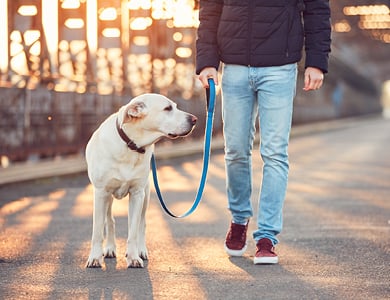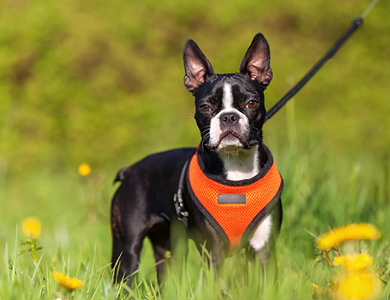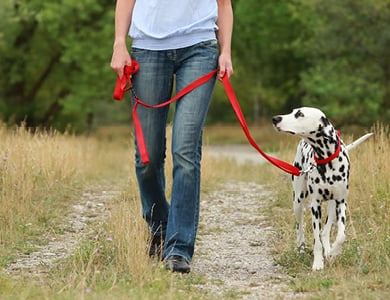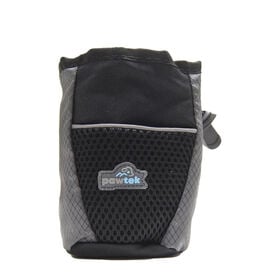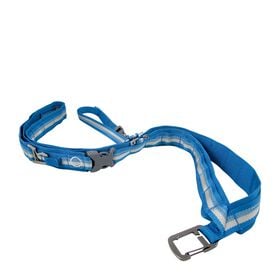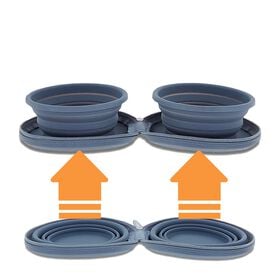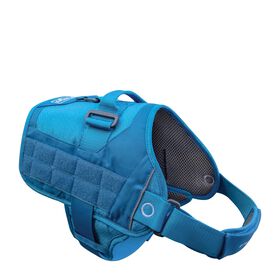We walk our dogs for various reasons, whether it’s to let them do their business or to get some fresh air. These walks can get repetitive, perhaps even challenging, since we often have busy schedules. Here are some tips to help keep you motivated to get out there and exercise your dog daily.
Before heading out
Whether you plan on walking in the woods or around your neighbourhood, here are some essentials you should always carry to ensure your dog’s safety and well-being:
- A foldable and portable bowl or a bottle with dog adapter for drinking water.
- Treats, or even a toy, that your dog loves to reward good behaviour during the walk.
- The notorious dog waste bags. Don’t forget, you’re responsible for cleaning up after your pet!
- A fluorescent collar, leash, or even light-up products that you can clip onto your dog’s collar or harness to remain visible at night.
- The leash! There is no valid reason for walking your dog without a leash. A 6-foot leash is usually ideal.
Harness vs. collar
I often say that collars are used for identification, and harnesses for walking. A dog’s neck is sensitive, and being leashed by the neck for too long can eventually lead to neck and back problems. It’s also ridiculous to think that you can handle a 100 lb dog by attaching a leash to its neck. A harness is more enjoyable for both you and your dog, and it also offers more body coverage.
If your dog never pulls, then attaching a leash to a back-clip harness is sufficient. However, if your dog does pull, you need a harness that can be attached to its chest area, so that you can control more of its movements. This type of harness restricts your dog’s shoulder movement when it tries to pull.
Educating your dog to walk tension-free
The myth of the militant dog walk still exists, you know, the one where your dog must walk right next to you. Let me simplify things for you. Your dog can walk to your left or to your right. It can walk in front of you, next to you or behind you. Your dog can also stop and sniff around. At the end of the day, all you need to do is make sure the leash isn’t too tight.
Here’s a simple exercise to help you achieve a tension-free walk:
- Begin walking. If the leash is loose, say "Here", or the keyword of your choice, and reward your dog as you continue walking.
- If the leash gets tights, stop walking to "punish" your dog for its bad behaviour. Encourage it to come back to you and start walking again. Repeat step 1 if the leash isn’t tight.
- It’s important to say "Here" and reward your dog for good behaviour so that it can clearly associate "Here" with not pulling.
- The key to success is consistency. If you walk your dog once or twice a week, your dog won’t understand. Dogs often get overly-excited when they are taken out on walks, and they continue to react this way if they aren’t taken out regularly.
To end on a funny note, don’t think your dog is trying to control or dominate you because it pulls on the leash. Your dog has four legs, while you only have two. Your dog isn’t pulling on the leash…you’re just not fast enough! Do not hesitate to call a canine worker if you have difficulty walking.


